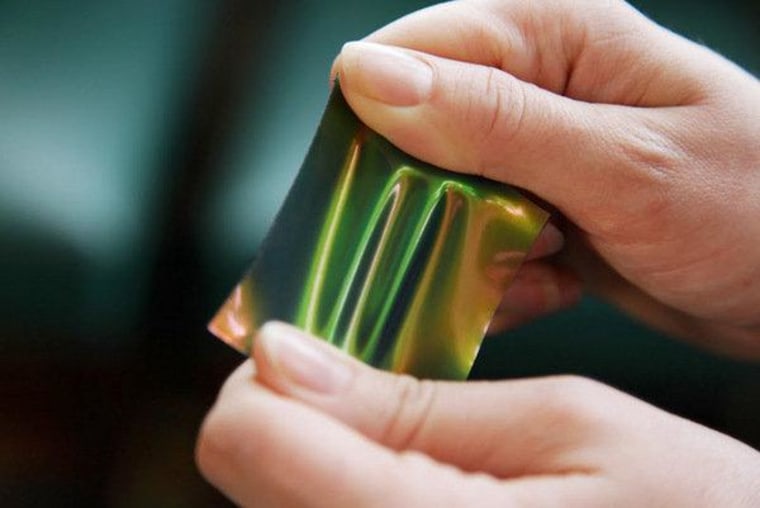By Jillian Scharr
Opals have a unique property: Their color comes not from pigment, but from their internal molecular structure, which is organized in such a way that it reflects certain wavelengths of light.
This "structural color" doesn't run or fade, unlike color from pigment.
Using nanotechnology, researchers at University of Cambridge in the U.K. have synthesized a substance that has structural color much like opals.
But that's not all — these "polymer opals," so called because they are comprised of polymers, or molecular compounds consisting of many repeating structures — are also thin and flexible, and could be used in fabrics, security devices and even printed money. [See also: Crystal 'Flowers' Bloom in Harvard Nanotech Lab]
The material is formed similarly to opals, which are created when tiny chips of silica, a glasslike material found in sand and quartz, are suspended in water. As the water evaporates, the silica chips settle onto each other in uneven layers, eventually bonding to form a hard stone that still contains somewhere between 6 percent and 10 percent water by weight.
The color of the opal depends on the structure the silica happen to take when they solidify into a crystal lattice. More space between the lattice's nodes results in bluer gems, while less space shifts the color down the spectrum toward red.
For the polymer opals, the researchers replaced the silica with spherical nanoparticles, and the water with a rubberlike substance that forms an outer shell. By controlling the pattern in which the nanoparticles bond to the shell, the researchers can control the finished material's color.
Once the structure is correct, the shell firms up into an elastic matrix that holds the nanoparticles together into a durable structure that reflects and refracts light, known as a photonic crystal.
[See also: Getting 'Kinky': Nanoscale Atomic Interfaces Have Serious Flaws]
If the outer shell in which the nanoparticles are encased is allowed to remain flexible, then moving or stretching this material will cause it to change color, because this action also changes the spacing of the nanoparticles' structure. So when stretched, the polymer opals' color shifts toward the blue range of the visible light spectrum, and when compressed, they shift toward red.
In addition to applications in jewelry, polymer opals also have the potential to make a splash in fashion, since the material could be made into a sheetlike shape and then bonded onto fabric.
Using polymer opals to create color instead of dye would lessen the textile industry's dependence on highly toxic chemicals to produce dye.
The researchers also emphasized polymer opals' potential to create bank notes and other security printing, as they can produce brighter colors than the holograms normally used on paper money and are much more difficult to counterfeit.
Email jscharr@technewsdaily.com or follow her @JillScharr. Follow us @TechNewsDaily, on Facebook or on Google+.
- 10 Ways You're Using Nanotech Right Now (And Don't Even Know It)
- The 10 Most Stunning Video Games
- 7 Biometric Technologies on the Horizon
Copyright 2013 TechNewsDaily, a TechMediaNetwork company. All rights reserved. This material may not be published, broadcast, rewritten or redistributed.
